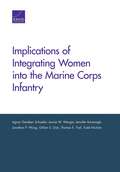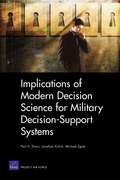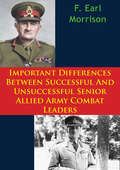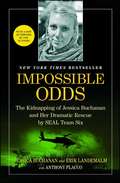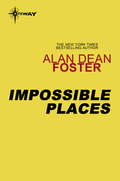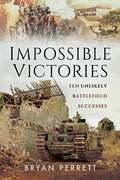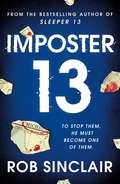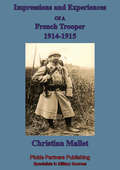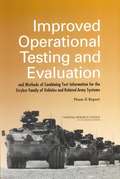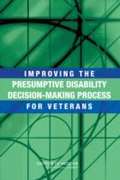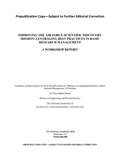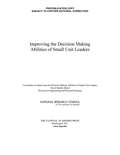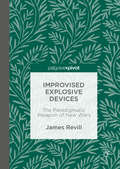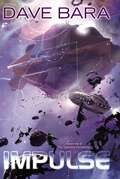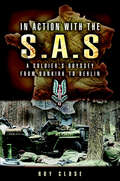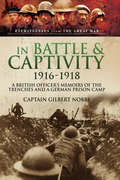- Table View
- List View
Implications of Integrating Women into the Marine Corps Infantry
by Agnes Gereben Schaefer Jennifer Kavanagh Todd Nichols Thomas E. Trail Gillian S. Oak Jennie W. Wenger Jonathan P. WongThis study for the U.S. Marine Corps presents a historical overview of the integration of women into the U.S. military and explores the importance of cohesion and what influences it. The gender integration experiences of foreign militaries, as well as the gender integration efforts of domestic police and fire departments, are analyzed for insights into effective policies. The potential costs of integration are analyzed as well.
Implications of Modern Decision Science for Military Decision-Support Systems
by Paul K. Davis Jonathan Kulick Michael EgnerA selective review of modern decision science and implications for decision-support systems. The study suggests ways to synthesize lessons from research on heuristics and biases with those from "naturalistic research." It also discusses modern tools, such as increasingly realistic simulations, multiresolution modeling, and exploratory analysis, which can assist decisionmakers in choosing strategies that are flexible, adaptive, and robust.
Important Differences Between Successful And Unsuccessful Senior Allied Army Combat Leaders
by F. Earl MorrisonTwo successful and two unsuccessful senior Allied Army combat leaders are studied to discern whether there are important differences in the qualities and abilities, they demonstrated in combat. The methodology used was to examine materials on the leaders for examples demonstrating courage, determination, coup d'œil, presence of mind, strength of will, and sense of locality--qualities and abilities which Carl von Clausewitz thought important. Any other qualities or abilities which appeared important in the cases studied were also noted. The study, however, represents an initial exploratory look. It is qualitative and judgmental, not quantitative and empirical. It was found that the successful leaders demonstrated a balance of qualities and abilities while the unsuccessful ones either lacked a balance or demonstrated some fatal flaw. Further study by other researchers is recommended.
Impossible Odds: The Kidnapping of Jessica Buchanan and Her Dramatic Rescue by SEAL Team Six
by Anthony Flacco Jessica Buchanan Erik LandemalmA New York Times bestseller!In 2006, twenty-seven-year-old Jessica Buchanan stepped off a plane in Nairobi, Kenya, with a teaching degree and long-held dreams of helping to educate African children. By 2009, she had met and married a native Swede named Erik Landemalm, who worked to coordinate humanitarian aid with authorities in Africa. Together the two moved from Nairobi to Somalia, and with hopes of starting a family, their future couldn’t have been brighter. . . . But on October 25, 2011, Jessica and a colleague were kidnapped at gunpoint and held for ransom by a band of Somali pirates. For the next three months, Jessica was terrorized by more than two dozen gangsters, held outdoors in filthy conditions, and kept on a starvation diet while her health steadily deteriorated. Negotiations for ransom dragged on, and as the ordeal stretched into its third month, the captors grew increasingly impatient. Every terrifying moment Jessica Buchanan spent suffering in captivity was matched by that of her adoring husband working behind the scenes to deal with her captors. After ninety-three days of fruitless negotiations, and with Jessica’s medical state becoming a life-or-death issue, President Barack Obama ordered Navy SEAL Team Six to attempt a rescue operation. On January 25, 2012, just before the president delivered his State of the Union speech, the team of twenty-four SEALs, under the cover of darkness, attacked the heavily armed hostiles. They killed all nine with no harm to the hostages, who were quickly airlifted out on a military rescue helicopter. In riveting detail, this book chronicles Jessica and Erik’s mutual journey during those torturous months. Together they relate the events prior to the kidnapping, the drama of Jessica’s fight to stay alive, and Erik’s efforts to bolster and support the hunt for her while he acted as liaison between their two families, the FBI, professional hostage negotiators, and the United States government. Both a testament to two people’s courage and a nail-biting look at a life-or-death struggle, this is a harrowing and deeply personal story about their triumph over impossible odds.
Impossible Places
by Alan Dean FosterFor three decades science fiction legend Alan Dean Foster has captivated readers around the world, from his debut classic The Tar-Aiym Krang and his inspired scenario for the first Star Trek movie to a host of New York Times bestsellers, including Splinter of the Mind's Eye and Flinx in Flux.In this collection of twenty brilliant odysseys of the imagination, Foster once again soars beyond the limits of reality - where the real thrills begin...NASA Sending Addicts to Mars!: It was the most insane idea in the annals of space travel - and the only one that would work.Diesel Dream: Sometimes on dark, lonely highways dreams do come true, and this trucker's hope was the best one of all.Sideshow: Flinx hadn't a clue about the alien dancer, but Pip knew trouble when she saw it.Empowered: A magnificent male discovers the not-so-super part about being a superhero.The Question: A bold adventurer determines to solve one of life's profound mysteries....and fourteen other amazing stories!
Impossible Victories: Ten Unlikely Battlefield Successes (Cassell Military Paperbacks Ser.)
by Bryan PerrettA military historian takes an in-depth look at a selection of surprising battlefield successes. Victory on the battlefield is sometimes achieved against the odds—victory snatched from the jaws of apparently inevitable defeat. A daring counterattack, an unexpected maneuver, a stubborn refusal to be beaten, and the impossible victory is won. In the ten dramatic episodes in this book, military historian Bryan Perrett revisits battles from the Peninsula War of 1811 to Vietnam in 1967, via colonial action in two world wars.
Imposter 13: The breath-taking, must-read bestseller!
by Rob SinclairTHE EXPLOSIVE FINALE TO THE SLEEPER 13 SERIESAgainst all odds, Aydin Torkal - aka Sleeper 13 - broke free from the terrorist group that took him as a child and raised him into a life of violence and hate.In the two years since, he's been tracking and killing those responsible. But he's not done yet.Now living a secret life in London, MI6 needs his help infiltrating a sinister new terrorist cell. In order to halt their deadly ambitions, he must convince the world's most dangerous terrorists that he's one of them.He must do it before the world suffers another deadly attack.And he must do it alone.He is IMPOSTER 13.THE SLEEPER 13 THRILLER SERIES HAS READERS GRIPPED:'Perfect for spy thriller lovers and fans of I Am Pilgrim, Orphan X' - Goodreads review'I could not put down this book' - Netgalley reviewer'Brilliant, gripping' - Netgalley reviewer
Imposter 13: The breath-taking, must-read bestseller! (Sleeper 13 #3)
by Rob SinclairTHE EXPLOSIVE FINALE TO THE SLEEPER 13 SERIESAgainst all odds, Aydin Torkal - aka Sleeper 13 - broke free from the terrorist group that took him as a child and raised him into a life of violence and hate.In the two years since, he's been tracking and killing those responsible. But he's not done yet.Now living a secret life in London, MI6 needs his help infiltrating a sinister new terrorist cell. In order to halt their deadly ambitions, he must convince the world's most dangerous terrorists that he's one of them.He must do it before the world suffers another deadly attack.And he must do it alone.He is IMPOSTER 13.THE SLEEPER 13 THRILLER SERIES HAS READERS GRIPPED:'Perfect for spy thriller lovers and fans of I Am Pilgrim, Orphan X' - Goodreads review'I could not put down this book' - Netgalley reviewer'Brilliant, gripping' - Netgalley reviewer
Impressions and Experiences of A French Trooper, 1914-1915
by Anon Christian MalletThe 22nd French Dragoons have a long and glorious history on the field of battle since 1630 to the Napoleonic battlefield of Austerlitz, Eylau, Jena it was called again to duty in the First World War, one of its members trooper Christian Mellet recorded his experiences in and out of the saddle.At the initial onrush of the French armies into Belgium to get to grips with the enemy Mallet and his regiment trotted out to war from Rheims in Northern France. The French forces in the Vosges and Alsace attacked en masse and were slaughtered whilst the cavalry that Mallet was a member fell back before stronger German forces. Fortunes swung back to the Allies side and as the Allies fought the battle of the Marne; Mallet, in the thick of it, remembers that he and his fellow troopers were exhausted and "covered with a layer of black dust adherent from sweat, looked like devils". Mallet and his comrades then faced the war on foot as the chance to use mounted troops gave way to the advent of trenches; he fought on bravely until an attack at Loos where as Mallet recalls "we entered the zone of Hell.". The Author by now a junior officer had the responsibility of leading his men, but suddenly felt "a brutal blow in the back with the butt-end of a rifle" but it was actually a vicious shell fragment that tore into his back. Mallet kept his men fighting for the time being until relief could arrive but was thereafter honourably discharged from the Army due to his wounds.Few memoirs of the French cavalry still exist and fewer still have been translated into English making this both rare and compelling. Mallet writes in an easy style which is filled with anecdotes on the march or out of the line and vivid vignettes of the fighting which appeared as a blur to him amidst the shot and shells.
Improved Operational Testing and Evaluation and Methods of Combining Test Information for the Stryker Family of Vehicles and Related Army Systems: Phase II Report
by National Research CouncilThis report assesses the US Army's planned initial operational test and evaluation of Stryker vehicles, the intended platform for the Stryker Brigade Combat Team (SBCT), and argues for the use of information-combining techniques in the operational evaluation of Stryker and similar systems. Recommendations are given on test measures, statistical design, data analysis, and assessment of the Stryker/SBCT operational test in a broad context. Annotation ©2004 Book News, Inc. , Portland, OR (booknews. com)
Improving The Presumptive Disability Decision-making Process For Veterans
by Institute of Medicine of the National AcademiesProduced by a committee of the Institute of Medicine, this report describes the current decision-making process for the provision of appropriate health care and disability compensation for veterans with health conditions that develop after military service which, in the absence of scientific evidence to create a complete link, are presumed to be connected to their military service. The report contains a brief history of presumptive disability decisions, description of the decision-making process, legislative background on presumptions, and evaluations of selected case studies of specific exposures and illnesses, and proposes a revised framework for building stronger scientific evidence into the process for making presumptive decisions in the future. The 13 appendices contain information organized by the Committee and Institute of Medicine to assist readers in understanding the background and issues; three of the appendices are in the book and ten are on an accompanying CD-ROM. No subject index. Annotation ©2009 Book News, Inc. , Portland, OR (booknews. com)
Improving the Air Force Scientific Discovery Mission: A Workshop Report
by Committee on Improving the Air Force Scientific Discovery Mission: Leveraging Best Practices in Basic Research Management: A WorkshopIn 2014, the Air Force Studies Board conducted two workshops to review current research practices employed by the Air Force Office of Scientific Research (AFOSR). "Improving the Air Force Scientific Discovery Mission" summarizes the presentation and discussion of these two workshops. This report explores the unique drivers associated with management of a 6. 1 basic research portfolio in the Department of Defense and investigates current and future practices that may further the effective and efficient management of basic research on behalf of the Air Force.
Improving the Air Force Scientific Discovery Mission: A Workshop Report
by Committee on Improving the Air Force Scientific Discovery Mission: Leveraging Best Practices in Basic Research Management: A WorkshopIn 2015, the Air Force Studies Board conducted a workshop, consisting of two data-gathering sessions, to review current research practices employed by the Air Force Office of Scientific Research (AFOSR). Improving the Air Force Scientific Discovery Mission summarizes the presentations and discussions of these two sessions. This report explores the unique drivers associated with management of a 6. 1 basic research portfolio in the Department of Defense and investigates current and future practices that may further the effective and efficient management of basic research on behalf of the Air Force
Improving the Decision Making Abilities of Small Unit Leaders
by National Research Council Naval Studies Board Division on Engineering and Physical Sciences Committee on Improving the Decision Making Abilities of Small Unit LeadersFor the past decade, the U.S. Marine Corps and its sister services have been engaged in what has been termed "hybrid warfare," which ranges from active combat to civilian support. Hybrid warfare typically occurs in environments where all modes of war are employed, such as conventional weapons, irregular tactics, terrorism, disruptive technologies, and criminality to destabilize an existing order. In August 2010, the National Research Council established the Committee on Improving the Decision Making Abilities of Small Unit Leaders to produce Improving the Decision Making Abilities of Small Unit Leaders. This report examines the operational environment, existing abilities, and gap to include data, technology, skill sets, training, and measures of effectiveness for small unit leaders in conducting enhanced company operations (ECOs) in hybrid engagement, complex environments. Improving the Decision Making Abilities of Small Unit Leaders also determines how to understand the decision making calculus and indicators of adversaries. Improving the Decision Making Abilities of Small Unit Leaders recommends operational and technical approaches for improving the decision making abilities of small unit leaders, including any acquisition and experimentation efforts that can be undertaken by the Marine Corps and/or by other stakeholders aimed specifically at improving the decision making of small unit leaders. This report recommends ways to ease the burden on small unit leaders and to better prepare the small unit leader for success. Improving the Decision Making Abilities of Small Unit Leaders also indentifies a responsible organization to ensure that training and education programs are properly developed, staffed, operated, evaluated, and expanded.
Improving the U.S. Military's Understanding of Unstable Environments Vulnerable to Violent Extremist Groups: Insights from Social Science
by David E. Thaler Gabriella C. Gonzalez Parisa Roshan Ryan Andrew Brown Blake W. MobleyFor over a decade, operations associated with irregular warfare have placed large demands on U. S. ground forces and have led to development of new Army and Joint doctrine. This report helps analysts identify and assess twelve key factors that create and perpetuate environments susceptible to insurgency, terrorism, and other extremist violence and instability to inform military decisions on allocation of analytic and security assistance resources.
Improvised Explosive Devices
by James RevillThis book begins with an account of the evolution of improvised explosive devices using a number of micro case studies to explore how and why actors have initiated IED campaigns; how new and old technologies and expertise have been exploited and how ethical barriers to IED development and deployment have been dealt with. It proceeds to bring the evidence from the case studies together to identify themes and trends in IED development, before looking at what can realistically be done to mitigate the threat of IEDs in the new wars of the twenty first century. The book suggests that the advance and availability of a combination of technological factors, in conjunction with changes in the nature of contemporary conflicts, have led to the emergence of IEDs as the paradigmatic weapons of new wars. However their prevalence in contemporary and future conflicts is not inevitable, but rather depends on the willingness of multiple sets of actors at different levels to build a web of preventative measures to mitigate if not eradicate IED development and deployment. "
Impulse (Lightship Chronicles #1)
by Dave BaraLieutenant Peter Cochrane of the Quantar Royal Navy believes he has his future clearly mapped out. It begins with his new assignment as an officer on Her Majesty's Spaceship Starbound, a Lightship bound for deep space voyages of exploration.But everything changes when Peter is summoned to the office of his father, Grand Admiral Nathan Cochrane, and given devastating news: the death of a loved one. In a distant solar system, a mysterious and unprovoked attack upon Lightship Impulse resulted in the deaths of Peter's former girlfriend and many of her shipmates.Now Peter's plans are torn asunder as he is transferred to a Unified Space Navy ship under foreign command, en route to an unexpected destination, and surrounded almost entirely by strangers. To top it off, his superiors have given him secret orders that might force him to become a mutineer.The crisis at hand becomes a gateway to something much more when the ship's Historian leads Peter and his shipmates into a galaxy of the unknown -- of ancient technologies, age-old rivalries, new cultures, and unexpected romance. It's an overwhelming responsibility for Peter, and one false step could plunge humanity into an apocalyptic interstellar war....
Imzadi Forever: Triangle (Star Trek: The Next Generation)
by Peter DavidA thrilling Star Trek: The Next Generation adventure featuring Commander Riker, Lieutenant Commander Worf, and the USS Enterprise. Imzadi: to the people of the planet Betazed, including Counselor Deanna Troi of the USS Enterprise, it means &“beloved&” and denotes that which can never be truly broken. Yet to whom does Deanna&’s heart truly belong? Commander William Riker was the first Deanna called Imzadi. Long before they served together on board the Enterprise, they shared a tempestuous love affair back on Betazed. And even now, many years later, Riker will embark on a desperate journey across time and space to save Deanna's life. But Riker is not the only Starfleet officer to capture Deanna&’s heart. Lieutenant Commander Worf, the fierce Klingon warrior, is also drawn to Deanna's gentle and caring nature. Brought together by fate, he and Deanna share an unexpected passion that tests the bonds between Troi and Riker—even as a deadly Romulan conspiracy threatens them all!
In Action with the S.A.S.: A Soldiers Odyssey from Dunkirk to Berlin (Reminiscence Ser.)
by Roy CloseA World War II memoir of a clerk who put down his pen and took up a weapon, rising through the ranks to become an elite Special Air Service soldier.Roy Close’s wartime experiences make breathtaking reading. Mobilized in 1939 he became part of the BEF and was fortunate to avoid death or captivity during the German blitzkrieg and escape through Dunkirk. Sent to North Africa, he joined the Paras and, from there, to the SAS. In 1944 he operated behind enemy lines with the Maquis in France, who were in open insurrection against the German occupiers. The scene then shifted to Holland and the advance through Germany. He witnessed Paris and Berlin in very early post-war years and was part of the Quadripartite Government of the former German capital.
In All Things First: No. 1 Squadron at War 1939 - 45
by Peter CaygillIn All Things First' looks in detail at 1 Squadron during the Second World War with particular emphasis on the pilots and its operational activities. 1 Squadron was active from a very early stage when it flew to France on 8 September 1939 as part of the Advanced Air Striking Force and played a significant role in the Battle of France. Unlike most other squadrons that fought in France, it also played a major part in the Battle of Britain in 11 Group. Later in the war the Squadron had considerable success in the night intruder role and also took part in the defense against hit-and-run raiders. It was highly active over occupied Europe carrying out Rhubarb and Ramrod operations including the dive bombing of V-1 installations. When the V-1 campaign began 1 Squadron was the highest scoring Spitfire squadron. During the Second World War it flew the Hawker Hurricane from 1939-42 before converting to the Typhoon. In early 1944 it received Spitfire IXs and ended the war with the Griffon-powered Spitfire F.21. The main parts of the book are as follows: 1) Early Days—a brief look at the history of 1 Squadron up to 1939, 2) The First Team—pilot profiles, 3) The Phoney War—Blitzkrieg—The Withdrawal from France, 4) The Battle of Britain, 5) Sweeps and Circuses in 1941, 6) Night Intruders, 7) The Typhoon—combat with Fw 190 Jabos and Ramrods, 8) The Spitfire, 9) The V-1 Campaign and conversion to the Spitfire F.21, 10) The Post War Years—the No.1 Squadron story brought up to date. There will also be extensive appendices to include aircraft losses, details of selected operations and pilot escape and evasion.
In An Instant: A Family's Journey of Love and Healing
by Lee Woodruff Bob WoodruffThe co-anchor to ABC's World News Tonight suffered a brain injury that almost killed him - this is how his family coped with the tragedy.
In Athena's Camp
by David Ronfeldt John ArquillaThe information revolution--which is as much an organizational as a technological revolution--is transforming the nature of conflict across the spectrum: from open warfare, to terrorism, crime, and even radical social activism. The era of massed field armies is passing, because the new information and communications systems are increasing the lethality of quite small units that can call in deadly, precise missile fire almost anywhere, anytime. In social conflicts, the Internet and other media are greatly empowering individuals and small groups to influence the behavior of states. Whether in military or social conflicts, all protagonists will soon be developing new doctrines, strategies, and tactics for swarming their opponents--with weapons or words, as circumstances require. Preparing for conflict in such a world will require shifting to new forms of organization, particularly the versatile, hardy, all-channel network. This shift will prove difficult for states and professional militaries that remain bastions of hierarchy, bound to resist institutional redesign. They will make the shift as they realize that information and knowledge are becoming the key elements of power. This implies, among other things, that Mars, the old brute-force god of war, must give way to Athena, the well-armed goddess of wisdom. Accepting Athena as the patroness of this information age represents a first step not only for preparing for future conflicts, but also for preventing them.
In Battle & Captivity, 1916-1918: A British Officer's Memoirs of the Trenches and a German Prison Camp (Eyewitnesses from The Great War)
by Captain Gilbert NobbsInitially published in 1917 under the title On the Right of the British Line, this is the first book written by the extraordinary Captain Gilbert Nobbs. Dedicated to his ever loving wife, the harrowing memories and experiences of Nobbs at the Battle of the Somme and after are captured here in a rare account of what proved to be one of the most ultimately futile battles and the agonising aftermath.Following his journey from the fields of the Somme into German custody, In Battle & Captivity 1916-1918 provides an unflinching report of the dramatic losses felt during the horrific Battle of the Somme. However, the book manages to maintain a message of hope that, despite experiencing the barbarity of German captivity, there can still be happiness, as Nobbs proclaimed, 'I do not deplore the loss of my sight, for I can say in all sincerity that I was never happier in my life than I am today.'During the Somme Offensive he led his company in an assault on the German trenches and sustained a shot to the head, which left him permanently blind when the bullet exited through his right eye. Grievously wounded, Nobbs lay undiscovered in a shell-hole as the battle raged round him. After two days he was found and awoke to find himself in a German hospital. Once his wounds had been treated Nobbs was sent to a POW camp where he remained for three months. Fortunately, one month later the truth was discovered, and in December 1916, Nobbs returned to England, where his home, wife and family awaited him. This is the astonishing autobiographical account of Henry Gilbert Nobbs, an extraordinary man of inexhaustible energy whose memoirs will forever provide one of life's enduring monuments to the human spirit.
In Bed with a Stranger: Craving The Forbidden In Bed With A Stranger (The Fitzroy Legacy #2)
by India GreySophie Greenham whirled into army officer Kit Fitzroy's life like a redheaded tornado, smashing through the walls surrounding his heart and changing his life forever. Leaving his bubbly fiancée to return to the front line disposing of bombs was the hardest thing Kit had ever done....When Kit returns home, his reunion with Sophie is raw and intoxicating. But the man Sophie loves is now a virtual stranger. Exquisite nights in sultry Morocco reconnect Sophie with her distant husband, but they'll need more than passion to survive the challenges ahead unscathed....In Bed with a Stranger is the unforgettable conclusion to India Grey’s two-part story. Don't miss part one, Craving the Forbidden, available now!
In Bed with the Badge (Cavanaugh Justice #17)
by Marie FerrarellaPolice officer Riley McIntyre is less than thrilled at being teamed with former academy classmate Sam Wyatt. They're assigned to solve a string of home invasions. The man is as mind-stoppingly handsome as he is irritating, sparking in Riley deliciously improper thoughts. But how can she possibly trust him on any level?Sam's life has just been upended, too…by the appearance of a six-year-old daughter he never knew about. Terrified of fatherhood, he turns to Riley for help with the sweet little girl. Before long, their days on the job end with nights of domestic bliss and insatiable passion. And when Riley's life is in jeopardy, Sam realizes how desperate he is to save her and his new family….
